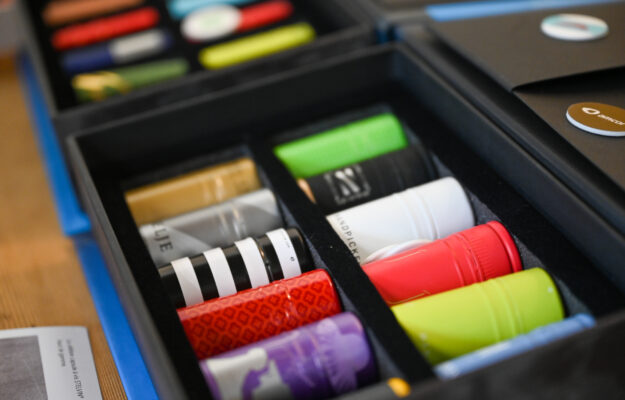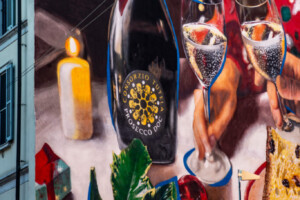The screwcap is a stylistic choice of the producer, the work now has to focus on the correct narrative to the final customer. Keeping in mind that it is not only suitable for fast turnover wines, as has always been claimed, but also, according to studies and comparative tastings, for wines for long aging. With consumers seeming more and more open to this type of closure, and also the world of production, especially looking at white wines. At least, it emerges from the themed day organized by the producers of “Gli Svitati”, namely Franz Haas, Graziano Prà, Jermann (now owned by Antinori, ed.), Pojer e Sandri and Vigneti Massa, who called together critics and researchers, bringing together, along with Guala Closures, the world’s leading screwcap producer, at the “Pentole Agnelli - since 1907” operations headquarters in Bergamo, Italy, personalities such as Oscar Mazzoleni (Maitre and Sommelier of Il Carroponte), Edgar Chaccha (Head Sommelier of Ciau del Tornavento), Matteo Montone (Master Sommelier and Group Wine Director of Maison Estelle), alongside Giancarlo Gariglio (curator of the Slowine guide), but also researchers such as Silvia Carlin and Fulvio Mattivi of the Mach Foundation, and wine regulation experts such as Michele Fino, professor at the University of Gastronomic Sciences in Pollenzo.
“A lot has changed from last year to today, our revolution is being felt, and we are increasingly convinced that the choice we have made is the right one for our wines”, comment the Svitati, who share, however, the need for a broader reasoning about the level screwcap, particularly in terms of educating and telling the final customer about this type of closure, with a clear difference between white and red wines. “The world of whites is more sensitive and open to the use of screwcap, now it is time to focus on reds as well. We have seen that corking changes the aging of the wine, and in this sense screwcap is a stylistic choice that should be respected and told to the customer in the right way”. Alongside the five wineries, there is also a “friend of the Svitati”, the Ettore Germano winery in Serralunga d'Alba, one of the few in Italy to produce a Barolo bottled with screwcap for some years now, on which it is carrying out several experiments. According to sommeliers, while internationally screwcap is now cleared through customs and the focus is placed solely on the quality of the wine offered, as Montone explained, with particular reference to the United Kingdom, Italian traditionalism is still very strong.
“We can no longer speak only of romance in the act of opening the bottle, the figure of the sommelier is not only this but must look at the quality of what he proposes. The revolution starts from the companies, but it goes through us to the end customer: if the screw cap preserves the wine in a better way in the way the producer intended it, it is necessary to go in this direction”, the sommeliers comment, in summary. Alongside the presentation to the final customer, the issue of production specifications was discussed during the meeting. The Consortia are the only bodies that have the possibility to apply the rules already in force at the European Community level regarding the screw cap, which would make it easier for producers to use this closure discretionary even for Doc and Docg wines. Also on the table were the results of a comparative study of old vintages of “Gli Svitati” wines between cork and screw cap, illustrated by Dr. Silvia Carlin and Professor Fulvio Mattivi of the Mach Foundation. The labels analyzed for the comparative tasting were Soave Doc “Otto” 2010 by Graziano Prà, Sauvignon Dolomiti 2007 by Pojer and Sandri, Venezia Giulia Bianco Igt “Vintage Tunina” 2013 by Jermann, Pinot Noir “Schweizer” 2015 by Franz Haas and Barbera “Monleale” 2016 by Vigneti Massa.
“The analytical results make it possible to show that all pairs of wines brought to the tasting, aged under identical conditions but packaged with the two different closures”, Silvia Carlin explains, “changed their composition as a result of the entry of different levels of oxygen: in particular, the corked wines had higher amounts of aldehydes such as methional (a compound with vegetable notes, from boiled potatoes), methylbutanal (with herbaceous notes) and phenylacetaldehyde (with honey notes), which result from oxidation reactions”. “It is often mistakenly believed that technical closures with low Otr (Oxygen Transmission Rate) are only good for young wines. When on the other hand, it has been shown how the differences between closures become more evident in long aging”, adds Professor Fulvio Mattivi, who with the second study analyzed some winery experiments made available by Vigneti Massa, specifically 20 bottles of 2017 Timorasso (bottled with crown, Nomacorc reserva, cork, screw) and 16 bottles of 2018 Timorasso (bottled with Diam 10, Nomacorc reserva, screw). “This study has shown that differences in performance between different technical closures are clearly reflected from an analytical chemical point of view in the aromatic profile of wines and, only in the case of major differences in oxygen ingress, also in the sensory profile. It is therefore up to the winemaker, from the perspective of precision oenology, to choose the cork/closure pairing according to the characteristics of the wine, the length of the planned aging in the bottle, and indulging the desired style of evolution”.
Michele Fino, a professor at the University of Gastronomic Sciences in Pollenzo, brought to light a broader reflection by playing on the issue of “closure”: not only as a corking of wine, but also ideological, which prevents thinking about the problems of innovation in the wine industry. “The setting problem is the idea that a closure determines the prestige of an appellation. In times of increasing focus on sustainability, shouldn’t the solution that impacts the least in terms of energy costs and recyclability be preferred as reputably better? By what right do you determine that a screw cap undermines reputation while using an 800 g glass bottle for a still wine does not?”. And Nomisma studies, reported by Emanuele di Faustino, also point to a consumer who is increasingly attentive to eco-sustainable packaging: “among the positive aspects recognized by the end customer to the screw cap, environmental friendliness appears to be key, as well as its ease of use”. “Aluminum closures, infinitely customizable in decoration and functionality, represent a responsible choice of sustainability. In 2010”, concluded Federico Donato (Guala Closures), “we were the first in the industry to introduce strategies and goals to build a Group capable of innovating and preserving our world”.
Copyright © 2000/2025
Contatti: info@winenews.it
Seguici anche su Twitter: @WineNewsIt
Seguici anche su Facebook: @winenewsit
Questo articolo è tratto dall'archivio di WineNews - Tutti i diritti riservati - Copyright © 2000/2025









































































































































































































